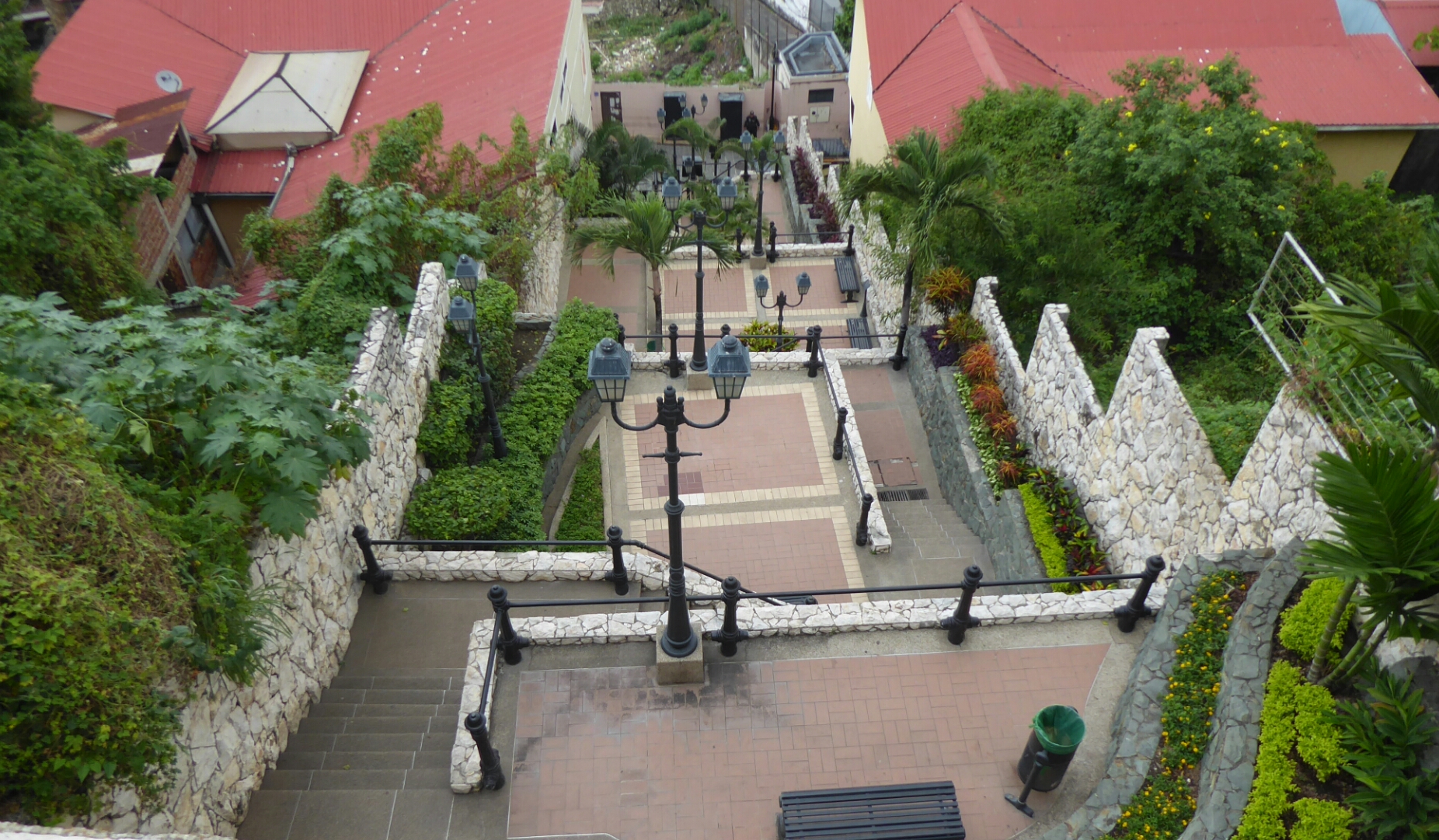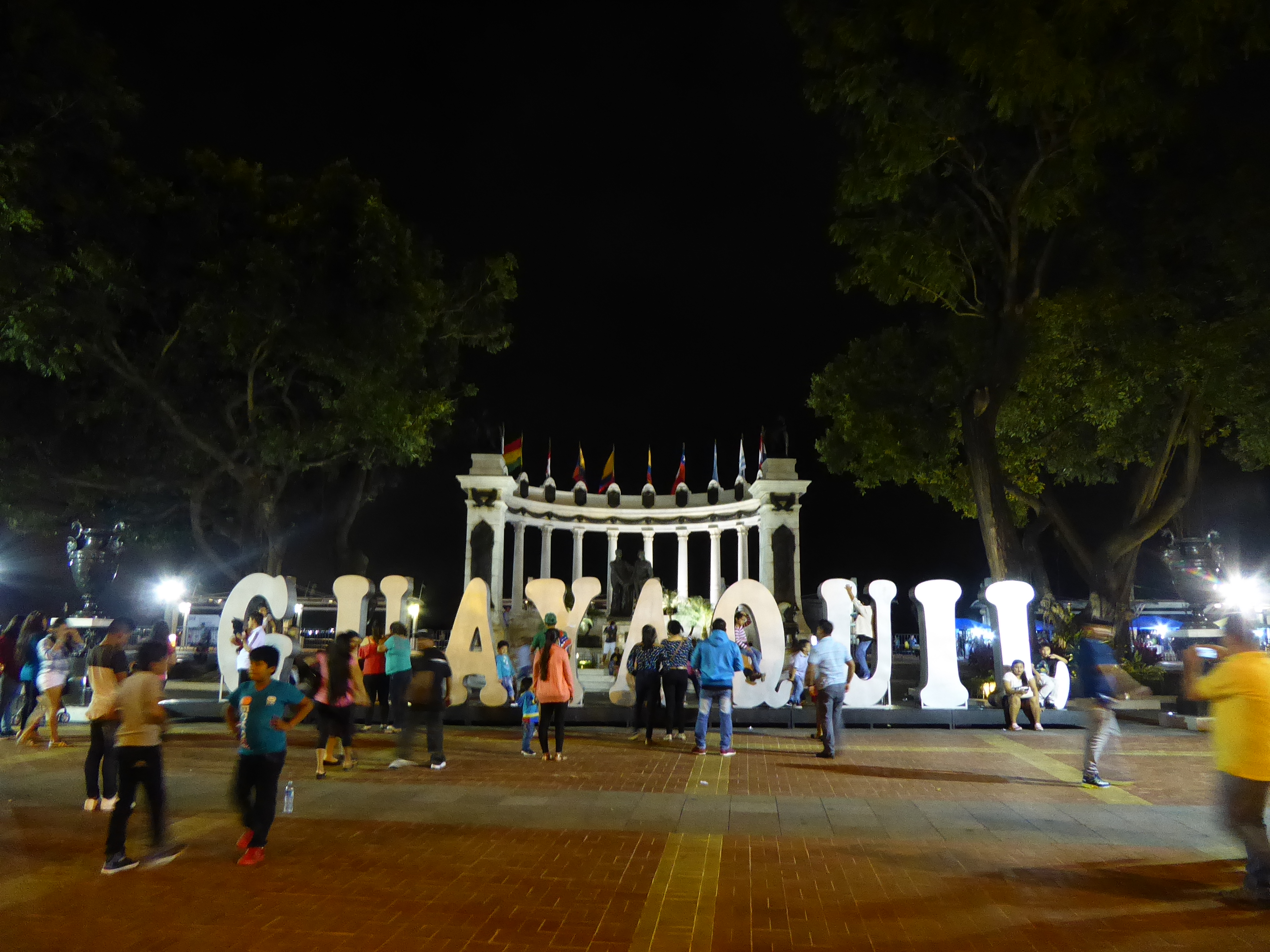 Guayaquil was not on my list of cities to visit. On the contrary I had planned to purposefully avoid it. It’s reputation as a crime ridden, hot and muggy, tropical city held no appeal for me. I was surprised to see it listed as a “Top site in Ecuador.” I went there reluctantly to break up the long trip from Canoa to Cuenca.
Guayaquil was not on my list of cities to visit. On the contrary I had planned to purposefully avoid it. It’s reputation as a crime ridden, hot and muggy, tropical city held no appeal for me. I was surprised to see it listed as a “Top site in Ecuador.” I went there reluctantly to break up the long trip from Canoa to Cuenca.
From Canoa to Guayaquil took six hours, passing through miles of banana plantations-reminding me of the banana republic moniker. The Guayquil main bus terminal was surprisingly modern: a large bright structure with shopping mall. I asked one of the many security personnel walking around for an ATM: he offered to escort me while I withdrew my funds. I accepted the offer. The taxi stand was managed by a woman in cap and uniform. She asked where I was going, led me to an available cab and told me the fare to the city center.
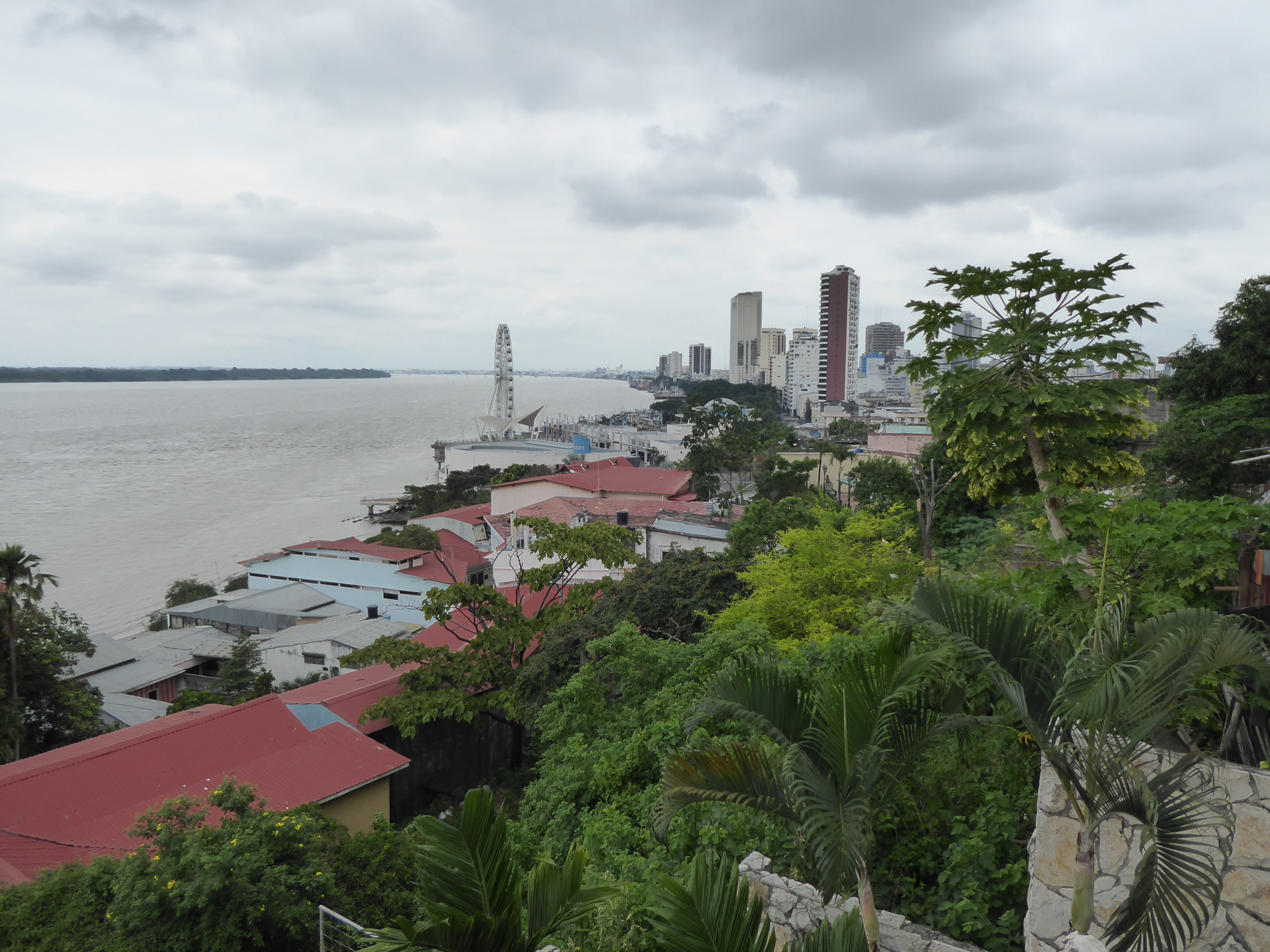
The taxi driver was gracious and helped me with my bag. A pleasant breeze was blowing and there was little humidity in the air. We were soon at the Manso Guesthouse: a converted three story colonial home. The hostal had received mostly positive reviews and it was right on Malecón 2000-the pride of the city. Like many old residences here there were many stairs to climb and the ceilings were impossibly high. The decor was tasteful and the common areas were huge. The manager showed me the available rooms warning me about noise in the front rooms, but the bright spacious bedroom overlooking the malecón was worth the potential annoyance.
The Malecón 2000 walkway/park runs along the Rio Guayas. The river is wide and murky, but provides an impressive backdrop for a picturesque promenade with restaurants, cafes, gardens, cinema, buskers, shops and amusement park.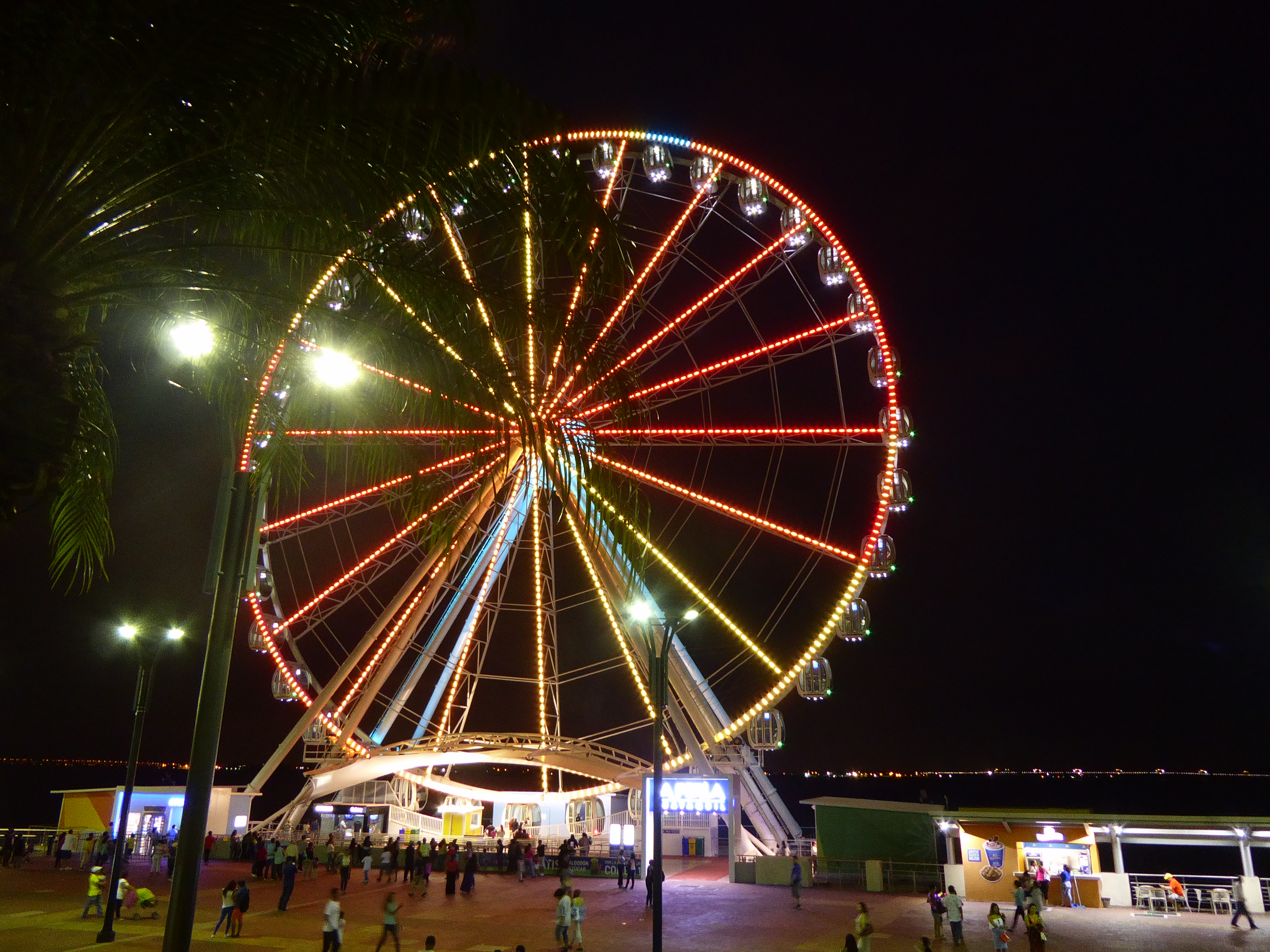
Although it was soon night-the sun sets around 6pm year round-the malecón was crowded with couples, families, individuals, groups of friends strolling along, laughing at the antics of the performers, or stopping for refreshments. Once again the presence of security personnel was pronounced, but the ambiance was relaxed-except between certain vendors, who were apparently violating their designated areas, and the security. I spent a few pleasant hours strolling and taking it all in.
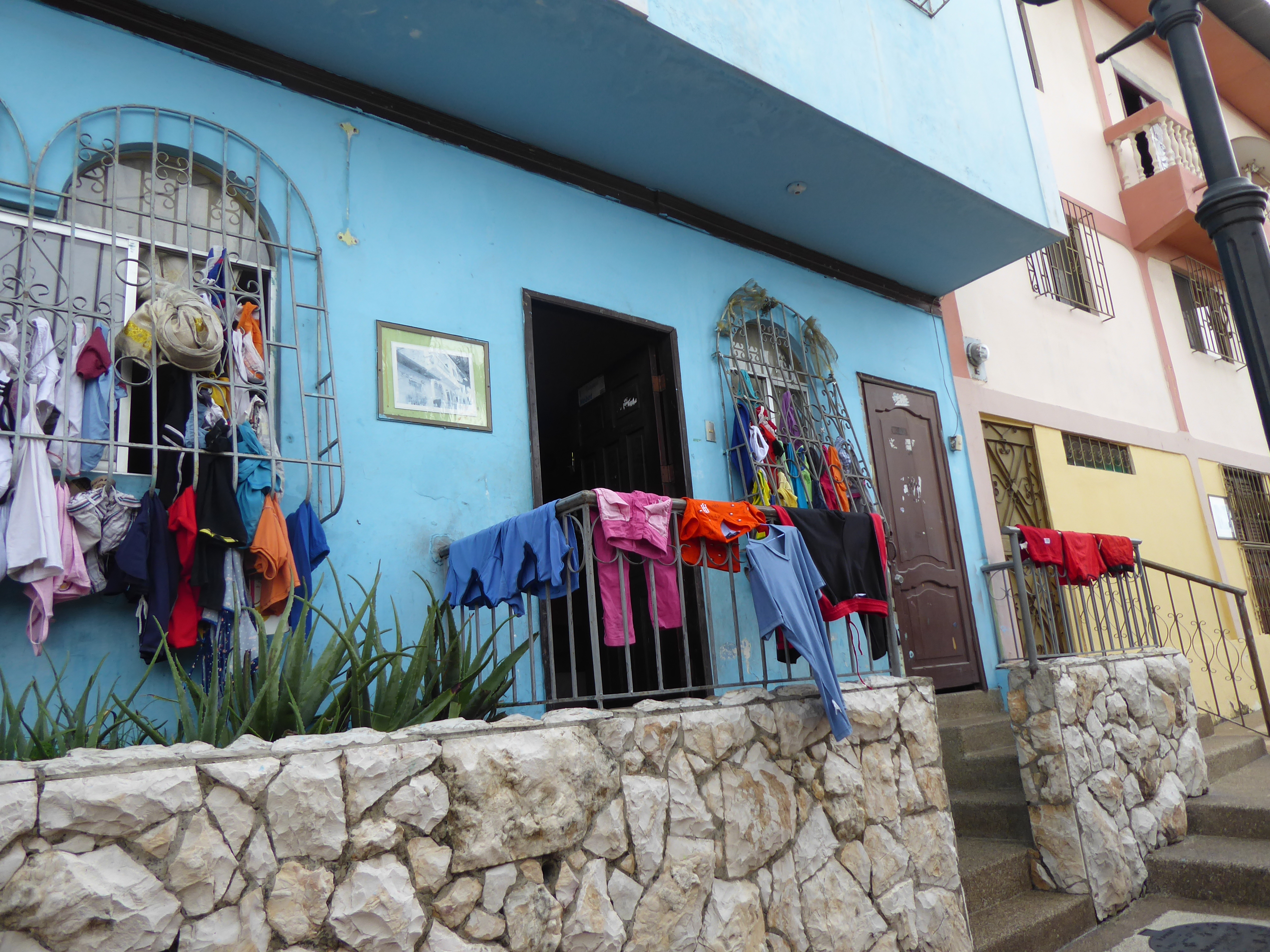
The noise from the traffic outside my window did not disturb my sleep.
The following day I walked over to Las Peñas which lies at one end of the Malecón. It is a colorful hilltop community with a wide range of architecture. Near the bottom lie restored mansions and modern hotels. The further one walks up the smaller and poorer the homes become-reminiscent of Brazil’s favelas. Although unthinkable for a non-resident to walk here ten years ago, it is now a popular tourist destination. Numerous security and police are posted along the pleasant narrow streets all the way to a lighthouse at the top.
Uniformed men with guns might be disarming if they weren’t all welcoming me with a wide smile and “Bienvenidos” as I neared. Although much of Las Peñas is still off limits-private and reserved for residents a.k.a unsafe for outsiders, the numerous shops and restaurants-not Disneyesque-brings locals an influx of dollars and tourists a delightful destination.
The transformation of the city with increased safety, parks and sites is undoubtedly providing an improved quality of life. Perhaps in time less security will be needed to aid in the transformation.
And so I spent two very unexpectedly enjoyable, relaxed days, in Guayquil.
